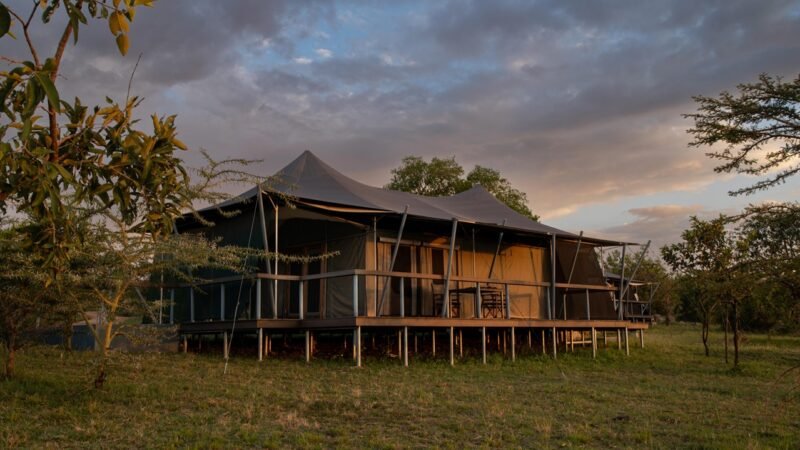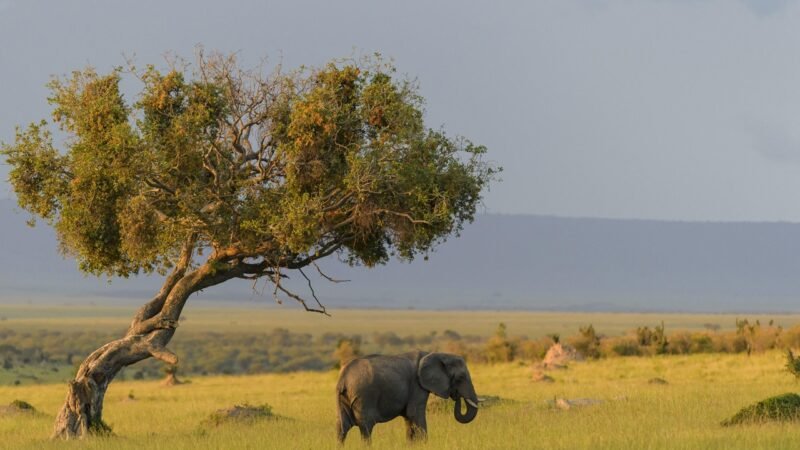Serengeti Travel 2025

Serengeti Travel 2025: The Ultimate Guide to Tanzania’s Wildlife Paradise
The Serengeti National Park, Tanzania’s crown jewel, is a global icon for wildlife enthusiasts, offering unparalleled safari experiences and the awe-inspiring Great Migration. Spanning 14,750 square kilometers, this UNESCO World Heritage Site is home to lions, elephants, and the world’s largest mammal migration. In 2025, new eco-lodges, sustainable tours, and enhanced visitor facilities make it the perfect time to explore this wild paradise. This Serengeti travel guide for 2025 highlights the best activities, accommodations, and tips for an unforgettable adventure. Dive into the heart of the Serengeti and witness nature’s grandeur!
Why Visit the Serengeti in 2025?
The Serengeti’s vast savannas, teeming with wildlife, offer a front-row seat to nature’s drama, from predator-prey chases to the Great Migration’s epic journey. Its accessibility from Arusha, combined with Tanzania’s commitment to conservation, makes it a must-visit. In 2025, new eco-friendly camps, conservation-focused tours, and improved park infrastructure enhance the experience while supporting sustainability.
Key Highlights for 2025:
- New solar-powered eco-lodges and campsites reducing environmental impact.
- Expanded walking safaris and conservation workshops for immersive experiences.
- Enhanced visitor centers with educational exhibits on wildlife and Maasai culture.
Top 8 Serengeti Activities
These activities showcase the Serengeti’s wildlife, landscapes, and cultural connections, catering to adventurers and nature lovers.
1. Great Migration Safari
The Great Migration, where over 1.5 million wildebeest and zebras traverse the Serengeti (January–March for calving, June–October for river crossings), is a bucket-list experience. Game drives ($150–$400/day) with operators like Tanzania Safari Co. offer prime viewing of this spectacle, with expert guides. In 2025, new migration-focused tours will include conservation talks.
Why It’s a Must: The world’s largest mammal migration is a natural wonder.
Tip: Book 6–12 months in advance for peak seasons (July–August).
2. Walking Safari
Walking safaris ($200–$400/day) with Asilia Africa provide an adrenaline-pumping way to track elephants, giraffes, and antelopes on foot, guided by armed rangers. New 2025 eco-trails will minimize environmental impact while offering close encounters with the bush.
Why It’s Thrilling: Intimate wildlife experiences with expert guides.
Tip: Wear neutral-colored clothing and sturdy boots.
3. Hot Air Balloon Safari
Soar above the Serengeti’s plains on a hot air balloon safari ($400–$600/person) with Serengeti Balloon Safaris. Watch sunrise over migrating herds, followed by a champagne breakfast. In 2025, new private balloon options will cater to small groups for a more exclusive adventure.
Why It’s Special: A breathtaking aerial perspective of the Serengeti.
Tip: Book early, as slots are limited.
4. Big Five Game Drive
Spot the Big Five (lion, elephant, buffalo, leopard, rhino) on guided game drives ($150–$400/day) with EcoAct Tanzania. Morning and evening drives maximize sightings of predators like leopards. New 2025 low-emission vehicles will enhance sustainability.
Why It’s Exciting: A chance to see Africa’s most iconic animals in one park.
Tip: Bring binoculars and a camera with a zoom lens.
5. Maasai Cultural Visit
Visit Maasai villages near the Serengeti ($15–$30) with Maasai Wanderlust for cultural immersion. Learn about traditional dances, beading, and conservation efforts. In 2025, new women-led tours will support Maasai education and sustainable projects.
Why It’s Cultural: Connects you with the Serengeti’s indigenous communities.
Tip: Buy handmade crafts to support local artisans.
6. Night Safari
Night safaris ($200–$350/day) with Tanzania Eco Safaris offer a rare chance to see nocturnal animals like hyenas and aardvarks. Using spotlights and expert trackers, these tours are thrilling and exclusive. New 2025 regulations will ensure minimal disturbance to wildlife.
Why It’s Unique: A different perspective on the Serengeti’s ecosystem.
Tip: Dress warmly for cooler nighttime temperatures.
7. Birdwatching Tour
The Serengeti’s 500+ bird species, including ostriches and secretary birds, make it a birdwatcher’s paradise. Guided tours ($100–$200/day) with Tanzania Birding Tours explore diverse habitats. In 2025, new conservation workshops will teach visitors about protecting bird habitats.
Why It’s Great: Ideal for nature lovers seeking quieter adventures.
Tip: Visit during the wet season (November–April) for migratory birds.
8. Conservation Workshop
Join conservation workshops ($50–$100) with Serengeti Conservation Project to learn about anti-poaching, wildlife monitoring, and habitat restoration. Hands-on activities include tracking data collection. New 2025 programs will fund ranger training and community projects.
Why It’s Sustainable: Directly supports the Serengeti’s preservation.
Tip: Combine with a game drive for a full-day experience.
Practical Tips for Serengeti Travel
- Best Time to Visit: June–October for the dry season, ideal for game drives and migration viewing. January–March is best for calving season and fewer crowds.
- Getting There: Fly from Arusha to Serengeti airstrips ($100–$300) via Precision Air or Coastal Aviation. Road transfers from Arusha (6–8 hours, $100–$200) are budget-friendly but bumpy.
- Visas and Health: Tanzania requires a tourist visa ($50–$100, online). Yellow fever vaccination may be needed from endemic areas. Use mosquito repellent (malaria risk) and bottled water ($0.50–$1).
- Cultural Respect: Dress modestly in Maasai villages (covering shoulders and knees). Ask permission before photographing locals.
- Sustainable Travel: Choose eco-certified operators and lodges. Join conservation activities like cleanups or wildlife monitoring. Avoid single-use plastics.
- Safety: Use licensed guides for safaris and secure valuables in lodges or vehicles.
Serengeti Accommodations
- Four Seasons Safari Lodge Serengeti ($500–$1,000/night): Luxury with infinity pools and eco-friendly design.
- Serengeti Serena Safari Lodge ($200–$400/night): Mid-range with sustainable practices and family suites.
- Serengeti Green Camp ($100–$200/night): Eco-friendly tented camp with solar power.
- Serengeti Wild Camp ($50–$100/night): Budget campsite with basic amenities.
- &Beyond Grumeti Serengeti Tented Camp ($600–$1,200/night): High-end eco-lodge with private plunge pools.
Booking Tip: Reserve 6–12 months in advance via Booking.com or eco-certified operators like &Beyond for peak seasons.
Serengeti Dining
- Bush Dinners: Lodges like Four Seasons offer gourmet bush meals ($20–$50) with local ingredients.
- Serengeti Serena Restaurant: Swahili and international dishes ($15–$30) using sustainable produce.
- Local Markets in Arusha: Stock up on snacks like fruits and nuts ($1–$3) for safari prep.
Pro Tip: Request vegetarian or vegan options at lodges for eco-conscious dining.
Sample 7-Day Serengeti Itinerary
Day 1: Arrive in Arusha. Stay at Arusha Backpackers ($20). Dine at Mama’s Kitchen ($5).
Day 2: Fly to Serengeti ($200). Great Migration game drive ($200). Stay at Serengeti Green Camp ($150).
Day 3: Walking safari ($250). Maasai village visit ($20). Stay at Serengeti Green Camp.
Day 4: Hot air balloon safari ($500). Big Five game drive ($200). Stay at Serengeti Serena Safari Lodge ($300).
Day 5: Night safari ($250). Stay at Serengeti Serena.
Day 6: Birdwatching tour ($150). Conservation workshop ($50). Stay at Serengeti Green Camp.
Day 7: Morning game drive ($150). Fly back to Arusha ($200). Depart.
Total Cost: ~$1,800–$2,300 for one person, excluding international flights.
Why the Serengeti in 2025?
The Serengeti’s unmatched wildlife, dramatic landscapes, and cultural connections make it a top destination. New eco-lodges, sustainable tours, and conservation initiatives in 2025 ensure a thrilling yet responsible adventure. From witnessing the Great Migration to learning Maasai traditions, your Serengeti journey will be a masterpiece of nature and culture.
Plan your Serengeti adventure now! Share your plans or questions in the comments, or explore our Tanzania Travel Guide 2025 for more inspiration!



